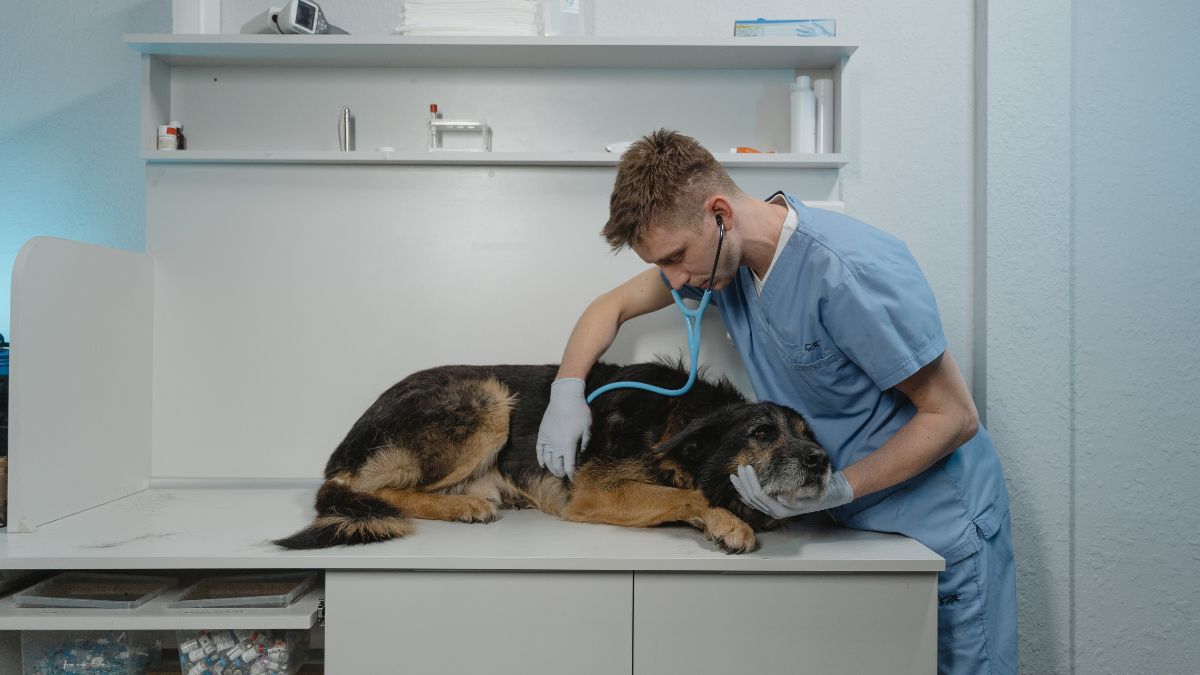Identifying the easiest vet schools to get into in us can be a pain in the ass, however, getting in is completely worth every bit of the stress.
To begin, students who attend vet colleges earn the title DVMS, which stands for Doctor of Veterinary Medicine and Surgery.
Veterinary medicine is concerned with the diagnosis, treatment, and prevention of disease, illness, and disorder in animals. As a result, vets treat diseases and disorders in animals.
For this reason, we have searched and figured out the easiest vet schools to get into in US. So, keep reading to know them.
Why Should I Attend A Vet School?
If you want to be a veterinary doctor, you must first go to vet school. Aside from that, there are several other reasons why students attend one.
This is one of the most crucial reasons to pursue a career in veterinary medicine. There is the opportunity to further your education and specialize in any of the following areas of veterinary medicine.
Surgery, dentistry, anesthesia, emergency care, nutrition, ophthalmology, sports medicine, pathology, and preventative care are among these specialties.
Read also: Top 15 Military Schools For Kids In the USA
How Much Do Vet School Graduates earn?
While many veterinarians begin their careers working for someone else, they do have the option of opening their own clinic, which may even be mobile.
The average income for new vets is roughly $50,000 per year, whereas the average compensation for all vets is $89,000. Highly trained experts and surgeons have the ability to make more money.
The most successful can make up to $200,000 each year. Schedules are also flexible, especially as you advance in your career.
Veterinarian employment is going to expand 18 percent from 2018 to 2028, substantially faster than the average for all occupations, according to the BLS. Overall, job prospects are excellent.
Nonetheless, your veterinary background can apply in different industries and roles such as veterinary pharmaceutical sales organizations, feed companies, wildlife agencies, laboratories, academic institutions, or the military.
You do not need to limit yourself to a standard practice of seeing patients daily.
Read also: Best 3-Year Medical Schools in the World
Do I Need to go to Vet School to be a Vet?
Yes, in fact. Although many animal-related occupations do not require you to attend vet schools, such as wildlife biologist or veterinary technician.
However, to become a veterinarian in the United States, you must first complete veterinary school. Furthermore, the majority of US veterans prefer to continue their education in the United States.
Veterinary colleges are quite competitive! As a result, patience is necessary. Last year, there were more than twice as many applicants as there were vacant admissions spots. Begin planning as soon as possible.
How to Practice as a Vet
The goal of going to veterinary school is to benefit animals. The value of veterinary pathologists, for example, is to promote animal health and welfare, as well as to assist traumatized and injured animals.
They even perform spay and neuter surgeries, which help to prevent pet overpopulation. As a result, it is critical to understand that to practice as a veterinarian in the United States, you must first receive a license.
You sit for this license exam after your vet school education. You cannot practice as a veterinary doctor until you attend vet school.
Read also: Top 15 Best Football Academies in the World
Admission Requirements of Vet Schools
Admission to veterinary school is tough, but not impossible. As a result, numerous schools only admit students who meet their admission requirements.
The following are the reasons why the colleges included in this post are easy to get into. For starters, their acceptance rates are thought to be higher than others.
As a result, they admit more students than many institutions and, as a result, may have a bigger class size. Next, these schools are less expensive than others.
Tuition at veterinary schools can be extremely high, but some schools have lower tuition. Invariably, students do not need to graduate with significant sums of debt that will follow them for a long time.
Although each school has its own set of standards, the ones listed below are the generally accepted qualifications that all vet schools consider to be basic.
- 3 or 4 years of Undergraduate studies
- Letters of Recommendation
- CGPA of 3.0 to 4.0 on a 4.0 scale
- Complete prerequisite coursework mandatory by your school of choice
- Personal Statement
- GRE or MCAT scores
- At least 100 hours of Experience
Read also: Top 10 Best Boarding Schools in North Carolina NC
Vet Schools Acceptance Rates
In general, admission to veterinary colleges is difficult. This is because there are only 30 of them in the entire United States, and they receive thousands of applications each year.
Every year, thousands of people apply to veterinary colleges, and only a small percentage of them are accepted. In other words, admission is difficult but not impossible.
So, based on the admission rates of numerous veterinary schools, it is safe to estimate that on average, there is a 10-15% acceptance rate to veterinary school.
However, the acceptance percentage is determined by the number of students the institution has decided to admit for the academic year. This figure, however, may vary.
Finally, even if your GPA is poor, if you meet the course prerequisites indicated by each of these colleges, you will be accepted after fulfilling all other requirements.
Read also: Easiest Dental Schools to Get Into Australia
What Is The Cost Of Attending An Easy Vet School
A simple veterinary school is one with a low acceptance rate and inexpensive tuition. Consider attending an in-state vet school because they have a moderate tuition plan if you want to get out of vet school without accumulating up debts.
The typical cost of four years of study at an in-state vet school is roughly $250,000. This is relatively inexpensive when compared to the cost of their private counterpart, which is roughly $400,000.
Can I Get Into Vet School With a 2.5 GPA?
The answer is NO. Getting Into Vet School With a 2.5 GPA is very hard, you can’t get into any vet school in the US with a 2.5 GPA. To get into any vet school in the US, you should have an average Overall GPA, of 2.75. – 3.23.
5 Easiest Vet Schools To Get Into In US
Check to see that you have completed all of the prerequisites for the curriculum before applying to any of these easy vet schools to get into in US.
Otherwise, it will be a waste of time and energy. Your in-state schools will be the most convenient.
The schools we are listing, on the other hand, were chosen based on their accreditation standards. In addition, we will rank the institutions based on their tuition and GPA.
The easiest vet schools to get into in the world are:
- Western University of Health Sciences
- Tuskegee University
- Oklahoma State University
- Oregon State University
- University of Illinois–Urbana-Champaign
1. Western University of Health Sciences
The College of Veterinary Medicine at Western University of Health Sciences is listed as one of the easiest veterinary schools to get into in the us.
The school was established in 1998 as the first new college of veterinary medicine in the United States in over 20 years. It was accredited in 2010 to offer a four-year professional curriculum leading to the DVM degree.
This is one of the vet schools with low GPA requirements between 2.75 GPA. Though You must also achieve a C or higher in all prerequisite coursework.
Admission is a highly competitive process and most applicants have between a 3.3 and a 4.0 GPA. The acceptance to graduation rate is quite high too.
For instance, it graduated 91.4% of students in 2019 and accepted 414 students for the 2019/2020 academic session.
In fact, it is one of the most innovatively equipped vet schools in the USA because it was built to correct the mistakes of the older schools. Again, the tuition fee for DVM is $55,575.00.
Lastly, the mission of the College of Veterinary Medicine is to educate veterinary professionals and advance knowledge to address the contemporary needs of society.
Read also: Easiest Medical Schools to Get into Greece
2. Tuskegee University
Established 75 years ago, the Tuskegee University College of Veterinary Medicine (TUCVM) is the only veterinary medical professional program located on the campus of a historically black college.
Actually, it has educated more than 70 percent of the nation’s African-American veterinarians. Its primary mission is to provide an environment that fosters a spirit of active, independent, and self-directed learning, intellectual curiosity, creativity, critical thinking, problem-solving, ethics, and leadership.
In the same vein, it promotes teaching, research, and service in veterinary medicine and related disciplines The tuition for one semester is $20,585.
Tuskegee University College of Veterinary Medicine GPA requirement is between 2.8 to 3.0 on a 4.0 scale, which makes it one of the easiest vet schools to get into in us.
3. Oklahoma State University
Oklahoma State University is one of the veterinary schools that accept students with low GPAs. 690 individuals were eligible for admission out of a total of 939 applicants.
The admittance rate for a veterinary school is 70%. The College ranks first in terms of value for the expense of a veterinary medicine degree.
This College of Veterinary Medicine, it appears, teaches and develops trained veterinarians for a career of research, innovation, care, and preservation of animal health.
Again, tuition is $23,890 for in-state students and $50,260 for out-of-state students. A GPA of 2.8 on a 4.0 scale is also required.
Read also: Best Engineering Schools in Germany with Tuition Fees
4. Oregon State University
Carlson College of Veterinary Medicine admitted 293 students out of a total of 1197.
This is not due to a lack of desire, but rather due to limited space and the maximum number of pupils that may be accommodated.
In reality, the annual tuition for residents is $26,688 and $51,375 for non-residents. The small class size and creative programming offer several possibilities for hands-on learning.
Oregon state university requires a cumulative GPA of 2.25 for Oregon residents. 2.50 for applicants without Oregon residency.
5. University of Illinois–Urbana-Champaign
The University of Illinois at Urbana-Champaign is well-known for its high-quality academic programs as well as its outstanding resources and facilities.
It is the first university to have developed a student disability resources division. The College of Veterinary Medicine is located on the campus’s southern outskirts.
Furthermore, there are over 100 full-time faculty members with research interests in a wide range of biomedical sciences and clinical fields. Finally, tuition is $24,938.44 per year for both residents and non-residents.
The University of Illinois at Urbana-Champaign requires an A grade point average (GPA) of 3.0.
Read also: Easiest Medical Schools to get into in Florida
Conclusion
Make sure you meet all of the prerequisites before applying to a vet school for your postgraduate studies. If required, rewrite the GRE, and if possible, hire a professional to draft your personal statement and application letter. Also, apply to colleges where you have a good probability of being admitted.








